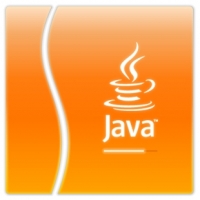


- #Java runtime environment how to
- #Java runtime environment mac os
- #Java runtime environment install
- #Java runtime environment update
- #Java runtime environment Offline
The Class Loader is responsible for correctly loading classes and connecting them with core Class Libraries. There are basically three parts that work in the Java Runtime Environment. Together with the Java Virtual Machine and the Java Development Kit, they form a trifecta of platform components needed for developing using this particular programming language. It provides the necessary libraries and resources that programs made using Java need to run and work properly on your computer.
#Java runtime environment install
(German): if you want the newest Java 9: install package openjdk-9-jre (which is in the universe repository, for Ubuntu 16.04 or later) using your usual package management tool.The Java Runtime Environment, sometimes referred to as JRE, is essentially a software layer that runs on top of your operating system.See the "Installing Java" article at the openSUSE Support Database. If you are interested in latest development version of java applications and extra plugins of them use the OpenStreetMap Gentoo Overlay. There are many plug-ins already available as ebuilds. By installing one of it, you can install the JRE as a dependence. Gentoo ebuild collections has some OSM Java applications. If you know about the current state of affairs, please help keep everyone informed by updating this information. The information may no longer be correct, or may no longer have relevance. This article or section may contain out-of-date information. You likely want to use a newer one and OpenJDK. "Older" because Java Version 6 is totally outdated. See refer to "User documentation" section at Debian wiki. "Java" page at Arch Linux wiki covers installation process.Multilingual install help available (e.g. Alternatively, install Oracle's Java from.Some distribution-specific instructions follow. Often the JRE from OpenJDK, the free software version of Oracle's implementation, is available in the default repositories. This will automatically keep the Java version updated. Use your distribution's package installer/manager to install a Java VM (JRE).
#Java runtime environment how to
For more info see the links there to Oracle's "install guide" or "system requirements" for Java on macOS.įor how to run a Java program, see the section further down this page. Note if you use the Chrome browser, this could cause very few websites (those which use java) to stop working. More information about how to install and uninstall Java on a Mac can be found on. If you're upgrading from an earlier Java version you may have to uninstall it before.Web method: Test which version of Java you have online (only work if you use the Java browser plugin which is not recommended for security reasons).Java HotSpot (TM ) 64-Bit Server VM (build 24.0-b56, mixed mode ) Java (TM ) SE Runtime Environment (build 1.7.0_40-b43 )

Ideally the output would look like this (in this example it is Java version 7):
#Java runtime environment mac os
Java JRE 1.5 (provided by Apple): Mac OS 10.4Ĭheck which Java version you have in macOS Java JRE 6 (provided by Apple): Mac OS 10.5 – 10.6 only Also, it seems not to enable "web content" (browser plugin) by default.
#Java runtime environment Offline
Good news: At least the current 64-bit offline installer (only this was tested) for Oracle's Java 8 seems to not contain crap software.However, then you need to manually check for new Java versions (important if you use the browser plugin/extension).
#Java runtime environment update


 0 kommentar(er)
0 kommentar(er)
